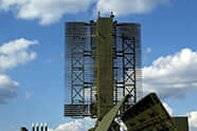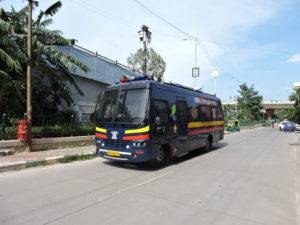Introduction
All of you must have heard about SaaS (Software-as-a-Service). How many of you have heard about VaaS (Video-as-a-Service)? This note takes you through a brief tour of the concept, its implementation, and its applicability for specific use-cases.
What is VAAS?
In the SaaS model, an application runs at a hosted facility (either the application vendor’s or a service provider’s). The servers, enterprise software, and database are part of the IT infrastructure at the hosted facility. The front-end runs at the client’s facility (typically through a Web browser), and the client pays a monthly subscription to the service provider, for using the application.
The VaaS model is similar in that the surveillance equipment (instead of the application) is at the customer location, and the video storage and management infrastructure is at a hosted facility. Customers can log in to the hosted facility using a browser, vide the Internet, from anywhere in the world; to access the video content (surveillance feed). There is no client application that resides on the customer’s Internet-enabled device (PC, mobile phone, etc.).

Some service providers differentiate between flavours of VaaS:
- Hosted VaaS – where the only investment the customer needs to make at its premises is the video surveillance camera(s) and a broadband connection. The video storage device (NVR, Hybrid DVR, PC), the Video Management Software (VMS), and the VMS server infrastructure are maintained at the Hosted Facility.
- Managed VaaS – where the video surveillance camera(s), the NVR(s), and the broadband connection are invested in by the customer; and the Hosted Facility provides the VMS and VMS server infrastructure.
However, with the availability of compact IP surveillance appliances (NVR, Hybrid DVR), and the increasing popularity of a distributed architecture, when implementing a surveillance solution, this distinction is slowly disappearing.
Business Model
Subscription per edge-device:
The two categories of edge-devices, in the IP video surveillance system, are content-capture devices (cameras) and content-recording devices (NVRs, Hybrid DVRs, PCs, appliance servers). Based on the system architecture (centralized vs. distributed), a customer may have the option of investing in just content-capture devices (centralized architecture) or it may necessarily have to invest in content-capture and content-recording devices (distributed architecture).
A service provider will typically charge a monthly or annual subscription fee per edge-device; or it may package a single-user license with each edge-device it sells. This subscription or license allows a user to access the VMS-managed content repository, for its edge-devices, from anywhere in the world; using an Internet-enabled device, a browser, and the authorized Login ID and Password. Additional user licenses are charged extra, and allow other users (say, if the customer is an organization instead of an individual) to access the same repository.
Subscription per infrastructure:
In this model, the service provider charges a monthly subscription fee which covers the rental of the equipment at the customer premises as well as the access to the content repository.
This is nothing but a combination of a traditional equipment-lease plan and the subscription per edge-device model. At the end of the lease period, the customer has the option of purchasing the equipment for a nominal charge or upgrading to more up-to-date equipment under a new subscription contract.
Target Users
The VaaS model is targeted at users who:
- Do not wish to invest in expensive infrastructure (server, OS, database, VMS) for simple surveillance requirements
- Do not wish to invest in personnel to manage and administer the infrastructure
- Do not have the facilities (real-estate, telecommunications, etc.) to host such an infrastructure
- Wish to focus on their core competence, and leave the support functions to the relevant experts
These are typically individuals (surveillance of residences), single- or multi-location SMEs (retail, commercial establishments, manufacturing, warehousing, restaurants, corporate entities), builders, transportation, and educational institutes.VaaS is not the best solution for customers and organizations whose policies mandate the location of the surveillance video content on their premises, either for reasons of confidentiality or security. Market segments such as law-enforcement agencies, defence, large corporations, hospitality/healthcare, are not best addressed by the VaaS model.
Difference between VaaS and Alarm Management
Please note that VaaS is different from Alarm Management services. VaaS focuses exclusively on managing the video content captured in a surveillance set-up, and making this content available to authorized users, for viewing and subsequent action. Alarm Management services use the content captured by the surveillance set-up (VaaS or non-VaaS) to decide on a response that ensures the security of the area under surveillance. A VaaS service provider can also offer Alarm Management services as a value-addition (usually by tying up with traditional armed-response organizations), but it is not incumbent on the service provider to do so.
Mistral Smartvue VaaS Offering
Mistral Smartvue’s default offering is a VaaS service, based on the Subscription per edge-device model. The Mistral Smartvue Wireless IP video surveillance solution requires a potential customer to invest in at least one NVR, and one or more cameras. The Mistral Smartvue solution is based on a distributed architecture, where the content captured by the surveillance cameras is recorded on-site, on the associated NVR.
Each Mistral Smartvue customer is entitled to a single-user access to the captured content, which is managed at a hosted facility. The customer accesses the VMS, InsightServer 2, over the Internet, using a browser; and sees the content captured by its NVRs, through InsightServer 2. The customer can purchase additional user licenses as annual subscriptions.



